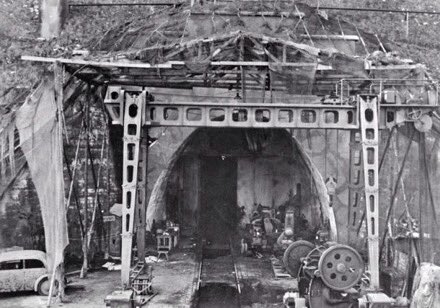The #Righteous amongst us
Jan Konstanski
How good neighbors overcame the flames of war
1/n
At the age of 15, Jan never looked back. He risked his life to help Jewish friends who were his neighbours in his childhood. This is another story about personal courage against all odds.
Jan Konstanski
How good neighbors overcame the flames of war
1/n
At the age of 15, Jan never looked back. He risked his life to help Jewish friends who were his neighbours in his childhood. This is another story about personal courage against all odds.
Wladyslawa Konstanska lived in Warsaw with her son and 2 daughters. In 1940, they moved to an apartment building. There they became close friends of the Wierzbicki family who were Jewish.
Jan Kostanski (left) and Jakob Wierzbicki ride in a rickshaw in the Warsaw ghetto
Jan Kostanski (left) and Jakob Wierzbicki ride in a rickshaw in the Warsaw ghetto

After the creation of the ghetto a wall separated the yard of the building and left the Wierzbicki family inside the walls of the ghetto
Helped by his mother, Jan began smuggling food into the ghetto to help his friends. He faced a lot of danger in order to keep in touch with the
Helped by his mother, Jan began smuggling food into the ghetto to help his friends. He faced a lot of danger in order to keep in touch with the
Wierzbicki family. In 1941, he found himself inside the ghetto when he was arrested and all the Jews who were together with him at the time were executed. Jan was interrogated, brutally beaten by the Germans
The Wierzbicki and Kostanski families in the Warsaw ghetto
The Wierzbicki and Kostanski families in the Warsaw ghetto

and released a couple of days later thanks to a bribe paid by his mother. In the summer of 1942, with the onset of deportations from the Warsaw ghetto, Jan once again succeeded in sneaking into the ghetto and extracting Itzik Wierzbicki and his children Noah and Naha. They found
shelter in an apartment that belonged to the family. In 1943, Jan smuggled the Wierzbicki family to a new hiding place, was arranged in advance. There, they were joined by a friend of the family, Walter Cykiert. One month later, the Germans began to liquidate the Warsaw ghetto.
The Warsaw Ghetto Uprising started. For the next 6 weeks the Wierzbicki family, Walter Cykiert and their saviours, watched the Germans put down the uprising. Building after building went up in
Jan Kostanski (right) with Fela Wierzbicka and husband Szmulek in the Warsaw ghetto
Jan Kostanski (right) with Fela Wierzbicka and husband Szmulek in the Warsaw ghetto

flames. Surviving Jews were sent to death camps.
After the suppression of the Warsaw uprising in October, 1944, the inhabitants of Warsaw were ordered to leave the city but Jan decided to stay and keep hiding together with his friends. They held out until the liberation of Warsaw
After the suppression of the Warsaw uprising in October, 1944, the inhabitants of Warsaw were ordered to leave the city but Jan decided to stay and keep hiding together with his friends. They held out until the liberation of Warsaw
in January 1945.
After the war, Wladyslawa married Itzik Wierzbicki and Jan married Wierzbicki’s daughter, Naha. Later, they all emigrated to Australia.
In 1983, Wladyslawa Konstanska and her son, Jan Konstanski, were awarded Righteous Among the Nations.
Jan (left) and Itzyik
After the war, Wladyslawa married Itzik Wierzbicki and Jan married Wierzbicki’s daughter, Naha. Later, they all emigrated to Australia.
In 1983, Wladyslawa Konstanska and her son, Jan Konstanski, were awarded Righteous Among the Nations.
Jan (left) and Itzyik

• • •
Missing some Tweet in this thread? You can try to
force a refresh

 Read on Twitter
Read on Twitter


















